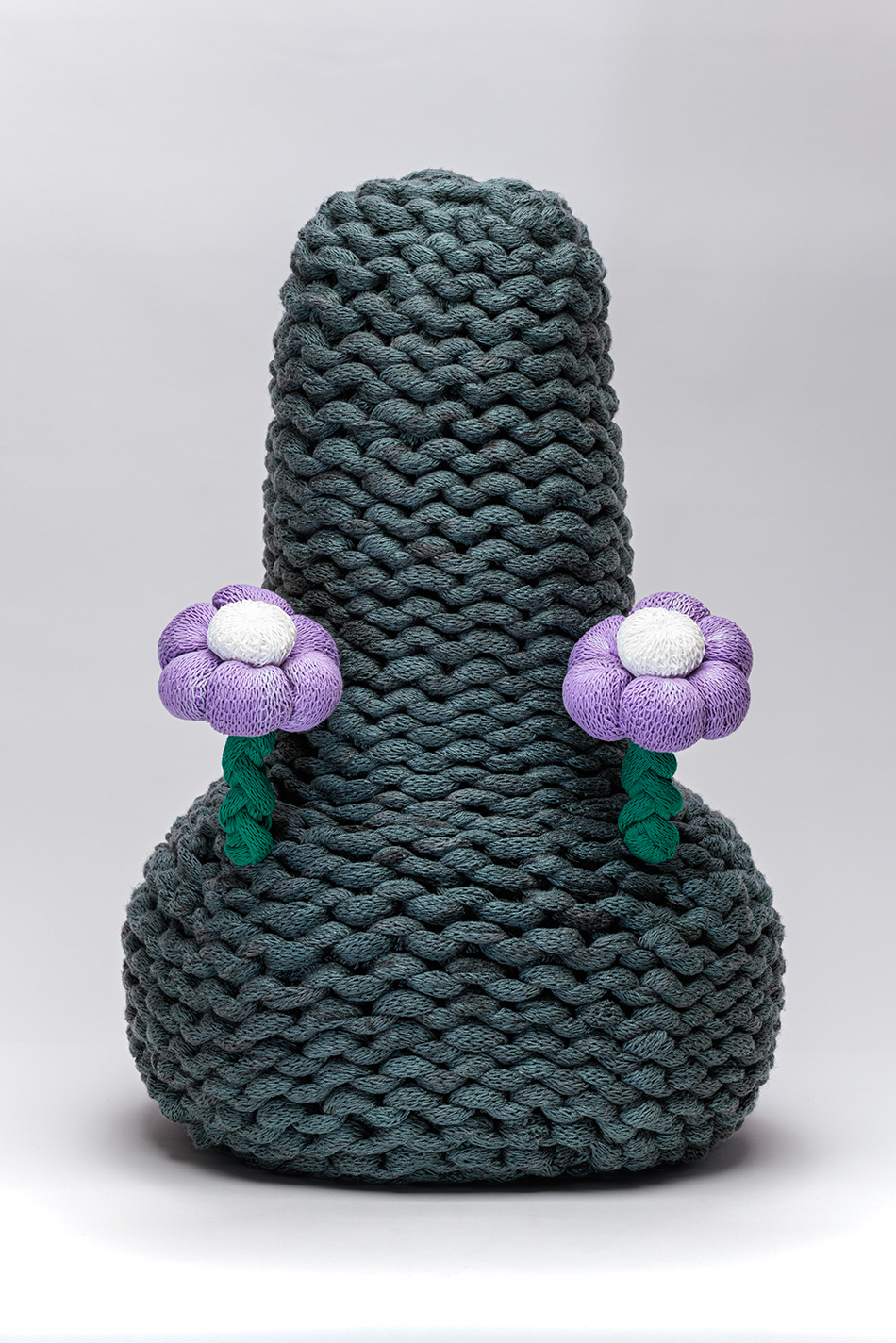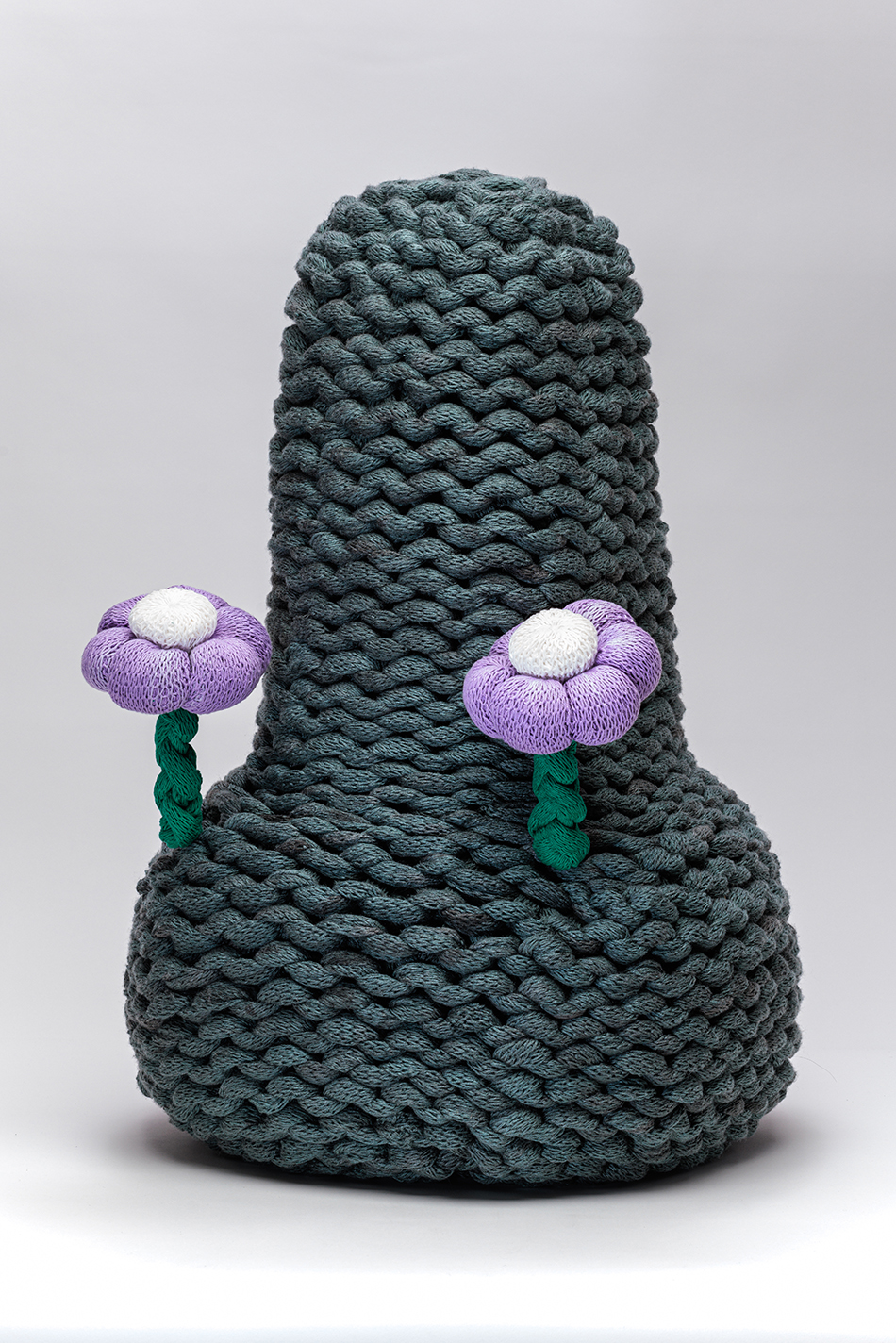
 Oil Tombstone 6
Oil Tombstone 6
2023
Surplus thread
750×500×500
Sculpture
Photo: Naoyasu Takemura
《石油の墓石 6》
2023年
残糸
750×500×500
彫刻
撮影:竹村直恭
It is a chemical fibre tomb made of woven chemical fibres. The yarns I use are those that have connected me to various people and places. As I want to create works by knitting materials that are available on the spot in the future, I have been thinking about what to do with the one tonne of yarn lying in storage, and I began to imagine the network that the yarn itself has, including the raw materials and various memories associated with the yarn.
Acrylic yarn is made from petroleum. There is a theory that petroleum is the carcass of a creature hundreds of millions of years old. The yarn I am holding in my hands now may be the graveyard of prehistoric creatures. That’s when the idea of making acrylic yarn graves came to me. It is also a memorial to the thread that has connected me to people and the city so many times.
The design of Japanese tombs with piles of stones is a simplified version of the Buddhist five-storey pagoda, which is meant to be a place for ancestral memorial services and a place to pray for Buddhahood. The act of weaving the stones from the bottom up is like the act of mourning the dead, and the layered pattern is reminiscent of oil-producing geological strata.
Where people live, there are graves. They are a part of the daily life of the living, and are places where people visit from time to time to remember and recall the deceased, and to make offerings to their ancestors. The tombs are beacons in everyday life that make us think about the origins of petroleum, which is an essential part of our modern life, and about the ancient past.
化学繊維を編んで作った化学繊維のお墓である。使っている糸は、これまで自分を様々な人や場所とつないでくれたものだ。今後はその場にある素材を編んで作品を作りたいので、倉庫に眠っている1トンもの糸をどうしようかと考えていて、糸の原料や糸にまつわる様々な思い出など糸自体が持つネットワークに想像をめぐらすようになった。
アクリル糸の原料は石油である。石油は数億年も昔の生物の死骸であるという説がある。私が今手にしている糸は太古の昔の生物の墓場なのかもしれないのだ。そこでアクリル糸のお墓を作るアイデアが浮かんだ。これまで幾度となく私と人、街をつなげてくれた糸を供養する意味もある。
石が積み重なった日本の墓のデザインは仏教の五重の塔を簡略化したものであり、先祖供養の場、成仏を願うものという意味合いがある。下から段々と編んでいく行為はまるで死者を追悼する石積みの行為のようであり、重ねられる編目模様は石油が産出される地層を彷彿とさせる。
人の住むところには墓がある。生きている者の日常生活とともにあり、折に触れて訪れ、故人を偲んだり思い出したり先祖供養する場所である。この墓は日常生活の中でふと、現代の生活に欠かせない石油の起源や太古の昔に考えを巡らせる標である。
.